By MARSHALL MCCLUELESS and ABLE RAVINGSTARK
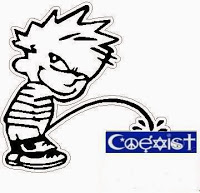 If you want a dictionary definition, postmodernism is a reaction against the assumed certainty of
scientific, religious, or objective efforts to explain reality. For a postmodernist, reality is
constructed in the mind as each mind tries to understand its own particular and personal reality. As a
result of this assumption, postmodernism is highly skeptical of explanations which claim to be valid for
all groups, cultures, traditions, etc. To a postmodernist, interpretation is everything, and reality only
comes into being through interpretations of what the world means to each person individually.
If you want a dictionary definition, postmodernism is a reaction against the assumed certainty of
scientific, religious, or objective efforts to explain reality. For a postmodernist, reality is
constructed in the mind as each mind tries to understand its own particular and personal reality. As a
result of this assumption, postmodernism is highly skeptical of explanations which claim to be valid for
all groups, cultures, traditions, etc. To a postmodernist, interpretation is everything, and reality only
comes into being through interpretations of what the world means to each person individually.
Postmodernism, as a critical method of inquiry, is about discerning "meaning" (which is subjective and relative), rather than "truth," which is presumed to be objective and universal. The primary postmodern critical method is "deconstruction." Simplified (or "kitschified") this means that for any work, whether a novel, a painting, a political platform, a religious belief, or even a scientific theory, the objective intention of the creator is less (or no more) important than how the receivers of the message understand it. Deconstruction is the technique of trying to identify and examine the biases (or if you prefer postmodern language "cultural or identity context") of a receiver to determine their understanding of the idea, rather than examining the intent of the creator.
The "crisis of modernity" posed by totalitarianism, the two World Wars and genocides of the 20th century increased skepticism among philosophers and intellectuals in the Western World, and led to the development of both existentialism and postmodernism as critical alternatives to modernity's assumptions about certainty and material progress.
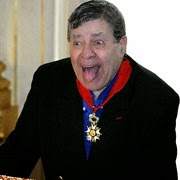 As a philosophical approach postmodernism developed fully after World War II, and is
generally associated with the "Three Stooges" of postwar French philosophy, Michel Foucault,
Jacques Derrida, and Jean-Francois Lyotart. From their ideas sprang the entire postmodern
construct involving metanarratives (the grand "objective" ideas of modernity, science and
religion) vs. local narratives (how meaning is determined by individuals within particular
cultures and identity groups) and deconstruction. And also the idea that Jerry Lewis was a cinematic genius.
As a philosophical approach postmodernism developed fully after World War II, and is
generally associated with the "Three Stooges" of postwar French philosophy, Michel Foucault,
Jacques Derrida, and Jean-Francois Lyotart. From their ideas sprang the entire postmodern
construct involving metanarratives (the grand "objective" ideas of modernity, science and
religion) vs. local narratives (how meaning is determined by individuals within particular
cultures and identity groups) and deconstruction. And also the idea that Jerry Lewis was a cinematic genius.
Postmodern art is a reaction against the increasingly abstract formalism in Modern Art. There is an especial irony in the way the terms "modern" and "postmodern" are used in art that differs somewhat from their meaning elsewhere, which in terms of "deconstruction" illustrate how meaning depends on the situation.
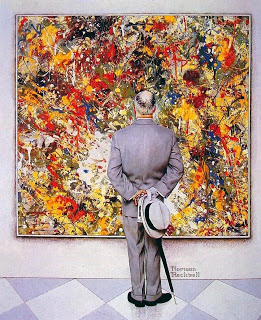 While modernism generally is associated with materialism and an emphasis on "this world" centered
reality, after the development of photography in the middle 19th century, and its use as the primary
medium to represent material reality, art (painting and sculpture) became increasing abstract, emphasizing
less and less how the average mind's eye saw reality (as in a realistic portrait or landscape painting), and
more and more how the artist defined reality. Impressionism, Expressionism, Dada, and Cubism were
significant movements in Modern Art, and the trend was increasingly towards an aesthetic nihilism that
made art meaningless or inaccessible for most people, culminating in the Abstract Expressionist works of
artists like Jackson Pollack. The era of Modern Art saw a strict divide between high art (meaning Modern
Art where the goal of art was to educate the masses about the "genius" of the artist, and the intent of
their art), and low art, which included kitsch. New York art critic Clement Greenberg, an early promoter
of Pollack, epitomized this dichotomy in his classic 1939
essay, Avant-Garde and Kitsch.
While modernism generally is associated with materialism and an emphasis on "this world" centered
reality, after the development of photography in the middle 19th century, and its use as the primary
medium to represent material reality, art (painting and sculpture) became increasing abstract, emphasizing
less and less how the average mind's eye saw reality (as in a realistic portrait or landscape painting), and
more and more how the artist defined reality. Impressionism, Expressionism, Dada, and Cubism were
significant movements in Modern Art, and the trend was increasingly towards an aesthetic nihilism that
made art meaningless or inaccessible for most people, culminating in the Abstract Expressionist works of
artists like Jackson Pollack. The era of Modern Art saw a strict divide between high art (meaning Modern
Art where the goal of art was to educate the masses about the "genius" of the artist, and the intent of
their art), and low art, which included kitsch. New York art critic Clement Greenberg, an early promoter
of Pollack, epitomized this dichotomy in his classic 1939
essay, Avant-Garde and Kitsch.
By the time Abstract Expressionism came to dominate high art in post World War II America, most people (exclusive of the urban art scene, and those plutocrats who saw art and museum benefaction as a way of overcoming their philistine origins) regarded Modern Art generally as little more than a trendy form of interior decoration, a kind of expensive wallpaper. It was in kitsch that a more naturalistic style of art aimed at mass consumption found refuge, and provided meaning for the "uncultured."
Postmodernism's effect on art, ironically, was to rehabilitate more conventional approaches to art (including artistic realism) as it deemphasized the intent of the artist in favor of how art should be viewed, or consumed. Trends in postmodern art include pop art (think Andy Warhol's Campbell Soup cans) and conceptual art, which arguably could include the Social Realism art of the 1930s as a precursor.
 The end result is that anything, including kitsch, becomes valid as "art" if someone values it as art, since
the meaning a viewer attaches to a work is more important than any other factor, including the training
or technical abilities of the artist, aesthetics, composition, etc. Postmodernism abolishes the distinction
between high culture and low culture, and, by implication, puts Thomas Kinkade (or the product of a dog
walking through spilled paint and onto a canvas) on the same level as Rembrandt or Leonardo DaVinci if
enough people believe both are.
The end result is that anything, including kitsch, becomes valid as "art" if someone values it as art, since
the meaning a viewer attaches to a work is more important than any other factor, including the training
or technical abilities of the artist, aesthetics, composition, etc. Postmodernism abolishes the distinction
between high culture and low culture, and, by implication, puts Thomas Kinkade (or the product of a dog
walking through spilled paint and onto a canvas) on the same level as Rembrandt or Leonardo DaVinci if
enough people believe both are.
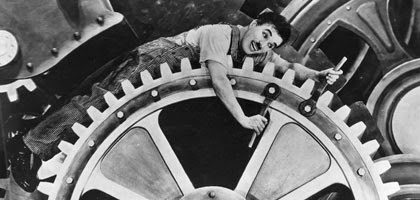 The classical high modern society in the West was one centered around an industrial economy, mass
media (print newspapers, a few large radio and television broadcasting networks) largely unfettered by
government censorship and that grew to embrace the notion they practiced a professional and objective
view of journalistic truth, and employment based in large micro-economies of scale, i.e large corporations
and non-profits, and which ultimately came have a rather high degree of labor protections for industrial
workers (unions, minimum wages, etc.), and included some form of government sanctioned social insurance.
The classical high modern society in the West was one centered around an industrial economy, mass
media (print newspapers, a few large radio and television broadcasting networks) largely unfettered by
government censorship and that grew to embrace the notion they practiced a professional and objective
view of journalistic truth, and employment based in large micro-economies of scale, i.e large corporations
and non-profits, and which ultimately came have a rather high degree of labor protections for industrial
workers (unions, minimum wages, etc.), and included some form of government sanctioned social insurance.
Metanarratives that dominated society and thought during modernity included industrial capitalism, Marxism (through social democracy in the West), mainline Christianity (increasingly rationalistic), deism and atheism, and a belief that science promoted human progress. Politics was centered in cohesive, fully functional political parties that were either liberal (not the Fox News meaning of the word, but liberal in the sense of believing in liberty, constitutional government, capitalist economics, whether laissez faire or Progressivist) or Social Democratic that built broad coalitions of voters through rational objective platforms and messages.
 Postmodernity, meaning late modern or first world societies in which postmodern ideas now flourish, is
characterized by de-massified media (dominated by internet, electronic media, cable or satellite television
with myriad choices for content, where the New York Times e-edition competes for "truth" on technologically
equal terms with the ravings of any blogger or tweeter) and a commercial news media dominated by deliberate bias
and target-marketed to identity groups. Employment in the free market economy is increasingly
postindustrial, digital and service oriented, and more customized and centered in smaller private
enterprises, or networks of strategically-partnered companies rather than large vertically or horizontally
integrated conglomerates. The remaining parts of the private sector that still resemble a hierarchical
industrial model have strategic partnerships with government through cronyism, special tax treatment, and
subsidization (military, financial, medical, energy, etc.) and remain the largest institutional employers
and are increasing oligopolistic. Due to increased productivity and technology, many industrial tasks are
now automated, or done by human workers in third world countries without the legal or labor protections
once offered to industrial workers in modern societies. Social insurance systems (particularly in the
United States, as with tax subsidized, but private, employer-based group health insurance) which were developed for an industrial
society dominated by large employers, become increasing anachronistic.
Postmodernity, meaning late modern or first world societies in which postmodern ideas now flourish, is
characterized by de-massified media (dominated by internet, electronic media, cable or satellite television
with myriad choices for content, where the New York Times e-edition competes for "truth" on technologically
equal terms with the ravings of any blogger or tweeter) and a commercial news media dominated by deliberate bias
and target-marketed to identity groups. Employment in the free market economy is increasingly
postindustrial, digital and service oriented, and more customized and centered in smaller private
enterprises, or networks of strategically-partnered companies rather than large vertically or horizontally
integrated conglomerates. The remaining parts of the private sector that still resemble a hierarchical
industrial model have strategic partnerships with government through cronyism, special tax treatment, and
subsidization (military, financial, medical, energy, etc.) and remain the largest institutional employers
and are increasing oligopolistic. Due to increased productivity and technology, many industrial tasks are
now automated, or done by human workers in third world countries without the legal or labor protections
once offered to industrial workers in modern societies. Social insurance systems (particularly in the
United States, as with tax subsidized, but private, employer-based group health insurance) which were developed for an industrial
society dominated by large employers, become increasing anachronistic.
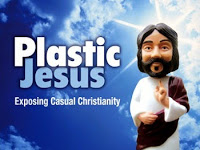 Postmodernity has witnessed the atrophy of many "modern" metanarratives. Religion is increasing subjective
and individualistic, with the catchphrase "I'm spiritual, but not religious" common.
Postmodernity has witnessed the atrophy of many "modern" metanarratives. Religion is increasing subjective
and individualistic, with the catchphrase "I'm spiritual, but not religious" common.
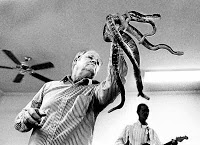 This occurs not just in "New Age," or romanticized Eastern religion adapted to Western individualistic
sensibilities, but also in Christianity where the mainline Protestant churches that dominated U.S.
modernity (like Episcopal, Presbyterian, Methodist, Congregational, Unitarian, etc), have withered
as the "born again" megachurch movement within evangelical Protestantism, the prosperity gospel, and
the Pentecostal movements stress both subjective and emotional aspects of a personally unique religious
experience and relationship between oneself and God. Likewise the affirmative certainty that there is no
God characteristic of atheism has given way to a more popular skeptical approach to theism, agnosticism
(it is impossible for humans to know the nature of God, or whether God exists).
This occurs not just in "New Age," or romanticized Eastern religion adapted to Western individualistic
sensibilities, but also in Christianity where the mainline Protestant churches that dominated U.S.
modernity (like Episcopal, Presbyterian, Methodist, Congregational, Unitarian, etc), have withered
as the "born again" megachurch movement within evangelical Protestantism, the prosperity gospel, and
the Pentecostal movements stress both subjective and emotional aspects of a personally unique religious
experience and relationship between oneself and God. Likewise the affirmative certainty that there is no
God characteristic of atheism has given way to a more popular skeptical approach to theism, agnosticism
(it is impossible for humans to know the nature of God, or whether God exists).
Another phenomenon of late modernity and postmodernity is the growth of religious fundamentalism as a reaction against secularization, and religious diversity. Additionally, academic critics of postmodernism are concerned that its subjectivity undermines the ability of a tolerant society no longer certain of the value system that originally led to its tolerant nature to resist in meaningful ways systems based on intolerance, including those based in religious fundamentalism.
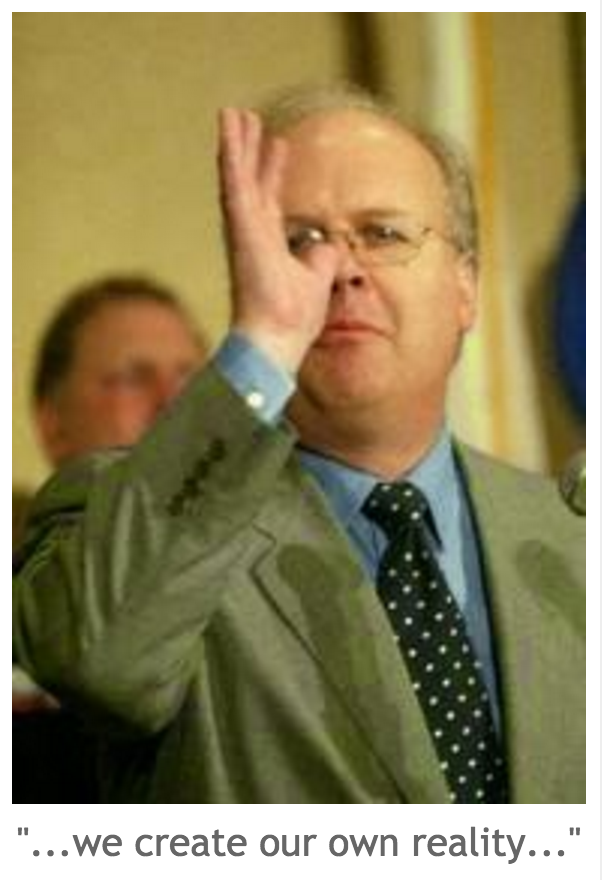
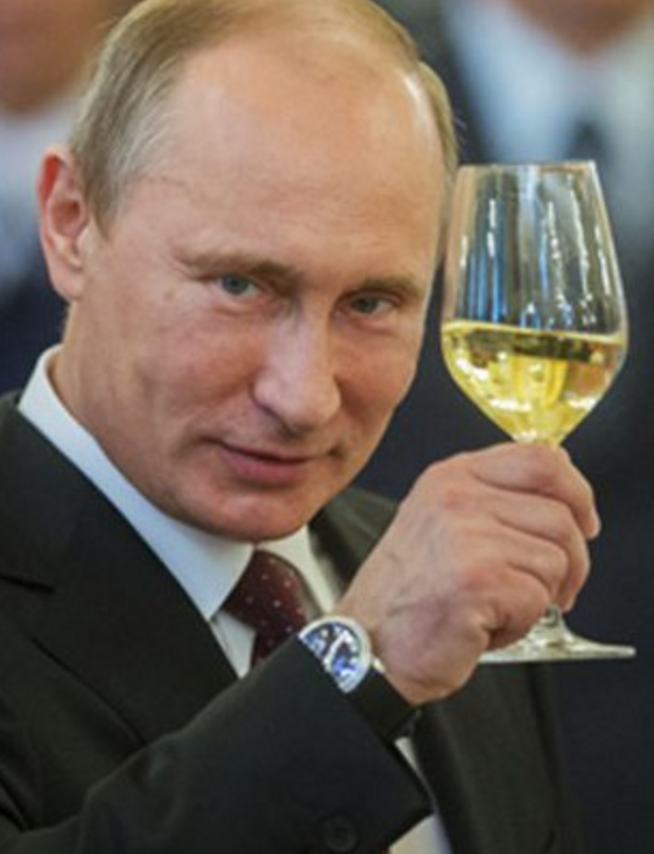 Politics in postmodernity is centered around identity groups, where political messages and platforms
are customized by professional consultants for individual candidates and campaigns to appeal to the
existing prejudices and bias of targeted groups (defined often by ethnicity, religion, etc.) instead
of by political parties that develop coherent rational messages designed to appeal to broad coalitions
without respect to such identity factors. A key feature of identity politics is cognitive dissonance, which
means that different identity groups within an identity coalition often have contradictory or conflicting
interests, but because of perceptional bias and carefully targeted, ambivalent messages, often are unaware
of them. This has led to the near universal use among politicians and their campaigns, both left and right, of
focus groups to "test" dissonant messages targeted for each identity group.
Politics in postmodernity is centered around identity groups, where political messages and platforms
are customized by professional consultants for individual candidates and campaigns to appeal to the
existing prejudices and bias of targeted groups (defined often by ethnicity, religion, etc.) instead
of by political parties that develop coherent rational messages designed to appeal to broad coalitions
without respect to such identity factors. A key feature of identity politics is cognitive dissonance, which
means that different identity groups within an identity coalition often have contradictory or conflicting
interests, but because of perceptional bias and carefully targeted, ambivalent messages, often are unaware
of them. This has led to the near universal use among politicians and their campaigns, both left and right, of
focus groups to "test" dissonant messages targeted for each identity group.

 Political parties themselves (in the United States at least) are increasingly less relevant in identity politics. Funding
for political candidates are provided by PACs and super PACs, and ground operations for individual
campaigns are increasingly run by independent organizations.
The triumph of perennial self promotor and reality TV star
Donald Trump in the 2016 presidential
election against a large collection of uninspiring traditional politicians of both parties illustrates how a "freelancer" or "entrepreneurial demagogue"
can success in a postmodern political economy characterized by atrophied party organizations, a
financialized plutocracy that successfully promotes
public policies benefiting primarily the connected and privileged through monetary lobbying,
a de-massified 'post truth' media,
and an exhausted electorate balkanized by deflective identity politics.
Political parties themselves (in the United States at least) are increasingly less relevant in identity politics. Funding
for political candidates are provided by PACs and super PACs, and ground operations for individual
campaigns are increasingly run by independent organizations.
The triumph of perennial self promotor and reality TV star
Donald Trump in the 2016 presidential
election against a large collection of uninspiring traditional politicians of both parties illustrates how a "freelancer" or "entrepreneurial demagogue"
can success in a postmodern political economy characterized by atrophied party organizations, a
financialized plutocracy that successfully promotes
public policies benefiting primarily the connected and privileged through monetary lobbying,
a de-massified 'post truth' media,
and an exhausted electorate balkanized by deflective identity politics.
 Postmodernity is, like premodernity, also an Age of the Huckster. Where the peddler of junk science, carbon
credits, and pulp fiction religion replace the purveyor of holy relics and indulgences. You will find
postmodernism lurking among the Scientologists of Hollywood, and spewing from the expert symposium
table at any cryptozoology convention. You will find it ranting on Fox News and bloviating on MSNBC. You
will find it in scientific data deliberately slanted in the paid service of an oil or tobacco company, or
manipulated to further the misplaced idealism of an environmental group. Likewise, kitsch kultur is
everywhere, on teevee, online, in every suburban mall limited edition print (and gentrified urban art)
gallery, and certainly on this website.
Postmodernity is, like premodernity, also an Age of the Huckster. Where the peddler of junk science, carbon
credits, and pulp fiction religion replace the purveyor of holy relics and indulgences. You will find
postmodernism lurking among the Scientologists of Hollywood, and spewing from the expert symposium
table at any cryptozoology convention. You will find it ranting on Fox News and bloviating on MSNBC. You
will find it in scientific data deliberately slanted in the paid service of an oil or tobacco company, or
manipulated to further the misplaced idealism of an environmental group. Likewise, kitsch kultur is
everywhere, on teevee, online, in every suburban mall limited edition print (and gentrified urban art)
gallery, and certainly on this website.





